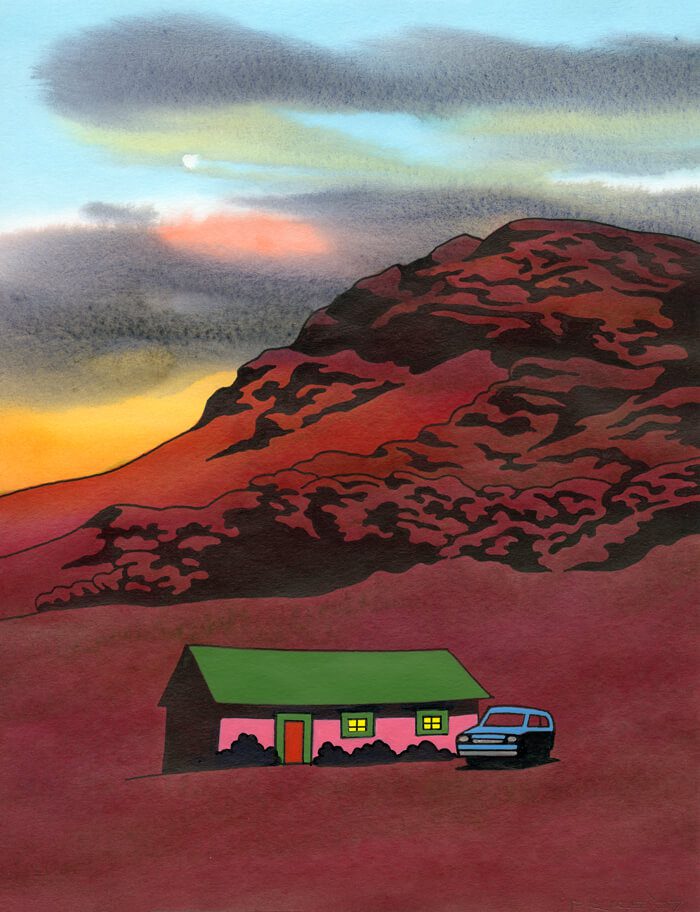
New Mexico is a place of legend, as witnessed in songs, paintings, novels, films, and more, yet some people don’t even know it’s part of the United States. Despite that oversight, the caliber of our creative economy is renowned. We asked nine curators, critics, and makers in the state to look back, in hindsight, at the vibrant art scene here as experienced in the past year, and to look forward as through a crystal ball at the year to come. They were asked to answer two questions:
What was your favorite exhibition in 2019: the most compelling, beautiful, or thought-provoking show?
and
What shows are you looking forward to in the next year?
They were steered away from mentioning their own institutions or shows they had curated. Here are their responses, edited for clarity and length, in celebration of another year of art-making, exhibition, and discussion in New Mexico.
Max Baseman
5. Gallery, Santa Fe
“My favorite exhibition of 2019,” Baseman, the curator at 5. Gallery, wrote in, “was the Ken Price exhibition at the [Georgia] O’Keeffe Museum.” [Contemporary Voices: Ken Price, June 7–October 31, 2019] He elaborated: “The Price exhibition at the O’Keeffe Museum was a gift. Kenny Price is an excellent artist whose work is not exhibited here enough. The way his pieces occupy a space—the contours and colors, the way they seem to bend space and light—is fantastic. Put simply, it feels good to be in a room with one.”
What is he looking forward to? He said, “In 2020, I’m most looking forward to the Alcoves 2020 [August 2019–June 2020] shows at the New Mexico Museum of Art. The New Mexico Museum of Art Alcoves produce—without fail—some of my favorite exhibitions every year that they are put on. Each feels like a complete exhibition and becomes a kind of reflecting pool—or perhaps more like a locket. It’s as if we can carry them with us when we leave.”
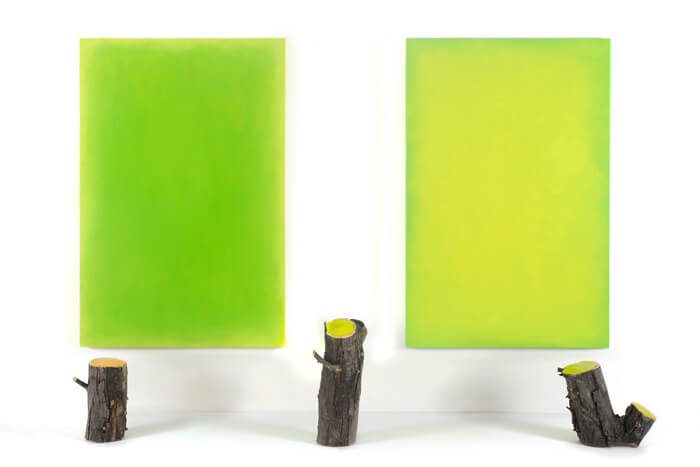
Sheri Crider
Sanitary Tortilla Factory, Albuquerque
Crider, who established a gallery, artist studio, and community space in downtown Albuquerque, is also an artist whose expansive works have been included in many exhibitions and publications. Among what stood out to her in 2019: “I loved the Casa tomada show at SITE Santa Fe [August 3, 2018–January 6, 2019]. I love that it told an overall story—the title is from a book [the Argentine writer Julio Cortázar’s 1946 short story, “Casa tomada”]. It’s a house taken over by someone else. It spoke to my own prejudices. It’s an intergenerational conversation, a beautiful symphony working together in a complex conversation. It’s related to place, location.” She continued, “I have a fellowship now and can go to New York two, three times a year. I can see things in NYC and come back here; it’s a lens… Art is so siloed here. New York has those siloed places too, on steroids, amplified. Who is the audience; what’s the intention? How does the venue affirm or dislocate that intention? Things that resonate with me have a perceived intimacy of the artist, so the viewer can have that connection too.”
Looking to the future, Crider said, “I’m going to Santa Fe to see the Agnes Pelton show [Agnes Pelton: Desert Transcendentalist, October 5, 2019–January 5, 2020, New Mexico Museum of Art], an under-recognized artist, a side note to the huge space that Georgia O’Keeffe has held. I follow the Fulcrum Fund awards; I’m looking forward to seeing Grace Rosario Perkins’s Couples Therapy.”
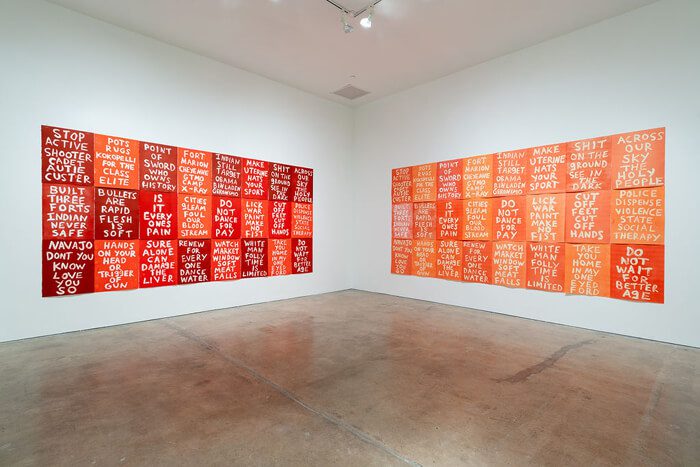
Lucy Lippard
art writer, curator, and activist, Galisteo
I had a brief but entertaining exchange with Ms. Lippard, who said she was in the middle of writing and couldn’t talk much but kindly gave a comment anyway. Lippard, well known for her art writing, curation, and for championing feminism, offered, “The current 516 Arts show, Species in Peril Along the Rio Grande [September 28–December 28, 2019] is timely and important, as was their Borderlands exhibition.”
As to the future: “Oh, I don’t know; I’m in my eighties.” Fair point. The future is unknowable.

Cameron Mozafari
Corpus Info Shop, Albuquerque
Corpus Info Shop is a queer literacy library/art and performance space, which provides a platform for marginalized people. Mozafari, one of the people who run the space, offered: “Well, this is not traditional, but my favorite event was the Albuquerque Zine Fest at the National Hispanic Cultural Center [October 5, 2019]. There are no barriers of entry. There were amazing artists who were exploring aspects of identity and themselves. I was in awe just being there. People traveled to come to it, some from the West Coast. I personally find it frustrating that the art scene here is so gate-kept. The DIY scene and smaller galleries are underrepresented, because larger galleries want to promote a specific narrative of art that excludes a lot of people. Where does that art from marginalized people get shown? It’s in the smaller spaces.”
What is he going to see in 2020? “I always like to see what fourteenfifteen gallery in Barelas is doing. Another event, which is in this space [Corpus Info Shop] but has nothing to do with us, is the Gathering of Queer Nations, curated by Rapheal Begay and Brad Charles.”
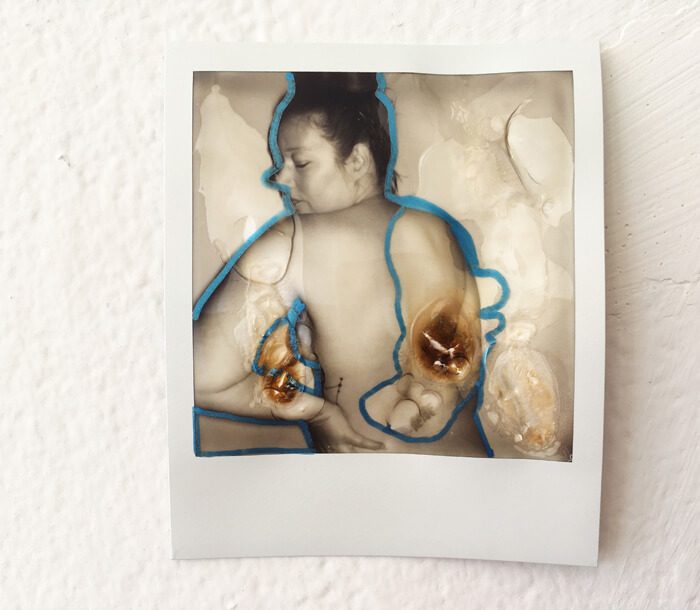
Ariel Plotek
Georgia O’Keeffe Museum, Santa Fe
Previously the curator for modern and contemporary art at the San Diego Museum of Art, Plotek joined the Georgia O’Keeffe Museum as curator in 2018. Musing on exhibitions visited in the past year, he suggested, “I want to put a word in for the Alexander Girard show at the folk art museum [Alexander Girard: A Designer’s Universe, May 5–October 27, 2019], organized by Vitra Museum in Germany. He was a designer and a friend of Georgia O’Keeffe’s. That was my favorite show.”
In the near future, Plotek will be visiting the New Mexico Museum of Art. “I’m going to go see the Agnes Pelton show,” he said. “I admit I didn’t know her until my last job in San Diego, where we had a painting with a great title, The Primal Wing. A wonderful piece, very surrealist. There’s much more to her than I knew.”
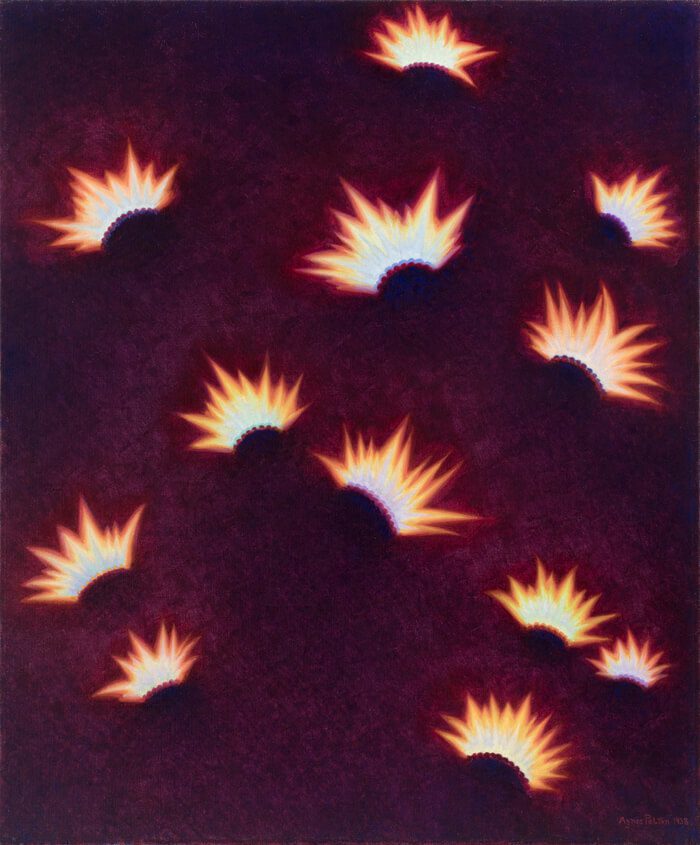
Augustine Romero
KiMo Theatre and South Broadway Cultural Center, Albuquerque
Augustine, curator at the KiMo, wrote in response to the questions: “Two exhibitions that I saw more than once, because they were exploring ideas that were crossing paths with my own endeavors were Brandon Maldonado, Identidades, at Pop Gallery, Santa Fe [July 5–August 25, 2019], and Qué Chola at the National Hispanic Cultural Center [March 8–October 4, 2019].” He added later, “I’m interested in how people are incorporating their identities into post-modern art… in how lived experience shapes you as an artist. As a curator, you become a gatekeeper. Art becomes a reflection of the institution. When working-class people come to SBCC, they have a conversation about the art. They have a sense: ‘This is my space.’ I look at art and my criterion is ‘Can I live without this?’”
What is Romero looking forward to? “Albuquerque has an amazing graffiti scene. There’s no editing, which can be good, sometimes. I look forward to the graffiti I see along Commercial Street on the trains. I drive by there on my way to work. I am also looking forward to Diego Romero vs. the End of Art at the Museum of Indian Arts and Culture [October 6, 2019–October 2020].
After our conversation, Romero and I walked down Commercial Street to look at the graffiti on the trains. To the right was the Albuquerque Railyards, in interesting ruin and reinvention. The colors of the graffiti were delicate, nuanced, the shapes curved and balanced. “Why is this not art?” he asked.
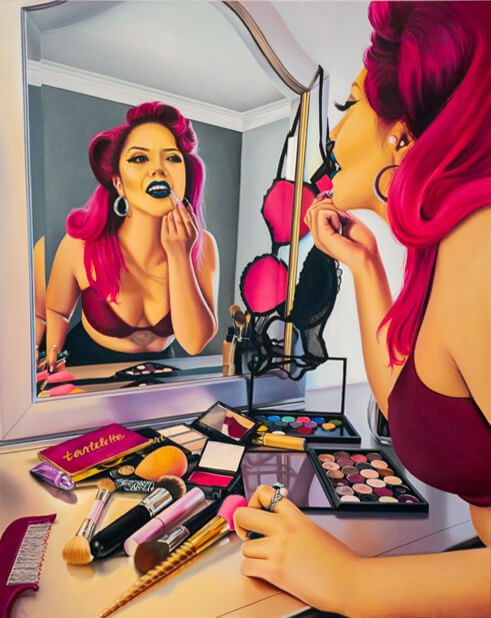
Nathan Rubinfeld
New Mexico School for the Arts, Santa Fe
Rubinfeld has been involved in curation since they were in high school. They had this reflection on the last year: “While I believe that not all art must hit you over the head with its politics, all art is nonetheless political. The New Mexico Museum of Art currently has one of the strongest teams of curators around. A particular highlight was this year’s The Great Unknown: Artists at Glen Canyon and Lake Powell [March 30–September 15, 2019], which featured an impressive range of works and documentation regarding that particular landscape’s fraught history—and present—including Edward Abbey’s anarchist flag from The Monkey Wrench Gang. I would be remiss if I did not balance this by recognizing the Museum of Indian Arts and Culture’s Beyond Standing Rock [February 23–December 1, 2019] and IAIA MoCNA’s Reconciliation [May 30, 2019–January 19, 2020]. Centered on the histories and conflicts that underpinned the now-abolished Entrada, the latter museum currently features an astounding mural by Lynnette Haozous, depicting the fierce and violent standoff between protestors and law enforcement that occurred during Fiestas in 2017. Most importantly, the mural corrects the attempted political erasure of the Indigenous women and non-binary leaders who put themselves on the front lines, such as Jennifer Marley.”
And heading into the new year, they offered, “I am looking forward to the New Mexico Museum of Art’s Picturing Passion, focused on depictions of the Catholic Brotherhood of Los Penitentes [November 27, 2019–August 16, 2020]. When it comes to placing an emphasis on community, no museum has done better at exploring and expanding the ways in which it does so than the Museum of International Folk Art. I am curious to see what their Dressing with Purpose: Belonging and Resistance in Scandinavia [December 13, 2020–February 13, 2022] will bring to the table, as the institution continues to foreground the social and political dimensions of the work they have long been known for showcasing.”
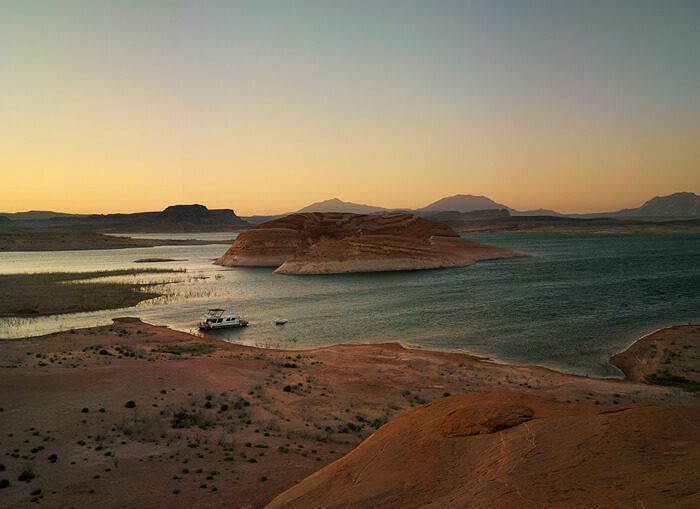
Marisa Sage
New Mexico State University Art Museum, Las Cruces
Interviewed while on the road, driving south, at one point she stopped to exclaim, “The drivers on the road to El Paso are too crazy!” The show the curator found most compelling in the last year was Mira Burack’s Sleeping Between the Sun and the Moon at 516 Arts in Albuquerque [June 22–August 31, 2019]. She described it as exploring motherhood, materiality, and relationships “in a poetic, silence-based space.” It is work dealing with “engagement with motherhood and her personal practice; it is beautiful, self-reflective, and contemplative.” Sage also loved a piece of art by Olafur Eliasson called Your reversed Berlin sphere installed at Richard Levy Gallery in Albuquerque [August 16–September 28, 2019]. “It’s a stunning work. It’s a sphere, which moves from yellow to blue during the day. Like a mirror-based view on the globalism of our time, you become part of the piece, where you are in his space and he is in your space. I love his work, so I am a little biased.”
“The show I’m looking forward to in the future is a show just over the [New Mexico-Texas] border in El Paso and Juarez called Border Tuner by Rafael Lozano-Hemmer [November 13–24, 2019].” In it, “light, sounds, conversations are transmitted over the [U.S.-Mexico] border. For fifteen nights, there are programs from different sides of the border—poets, music, conversation. It’s open to any visitor. It’s going to be an unbelievable project.”
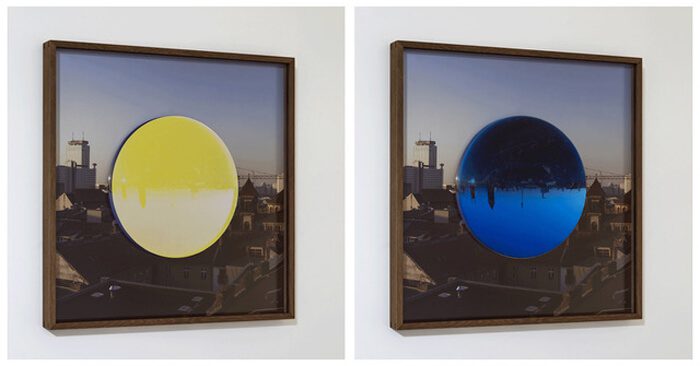
Merry Scully
New Mexico Museum of Art, Santa Fe
Scully, head of curatorial affairs at the New Mexico Museum of Art, reflected on work seen near home and farther afield, saying, “I saw an artist in New York that blew my mind: Mrinalini Mukherjee, at Met Breuer, Phenomenal Nature [June 4–September 29, 2019]. I can’t stop thinking about this work. It was woven, knotted hemp and cotton. It was on an enormous scale. There were fifty-seven pieces in the show, from her early career to the 2000s. Mukherjee was a New Delhi–based artist. I saw Daniel McCoy at Etiquette, a small alternative gallery in the industrial area in Santa Fe. I’ve seen his work before—it’s influenced by pop culture, animation, R. Crumb—but this was a big jump in the way he was dealing with landscape. I liked the Bel Canto show at SITE Santa Fe [March 16, 2019–January 5, 2020]. Fritz Gallery in the Santa Fe Railyard is also always worth checking out.”
With this framework, she looked ahead: “In New York, I’m looking forward to Vija Celmins, the sculptural work. And I’m pleased to see how dynamic the scene is here [in New Mexico]. The significance of art is known here, and that’s not true everywhere.”
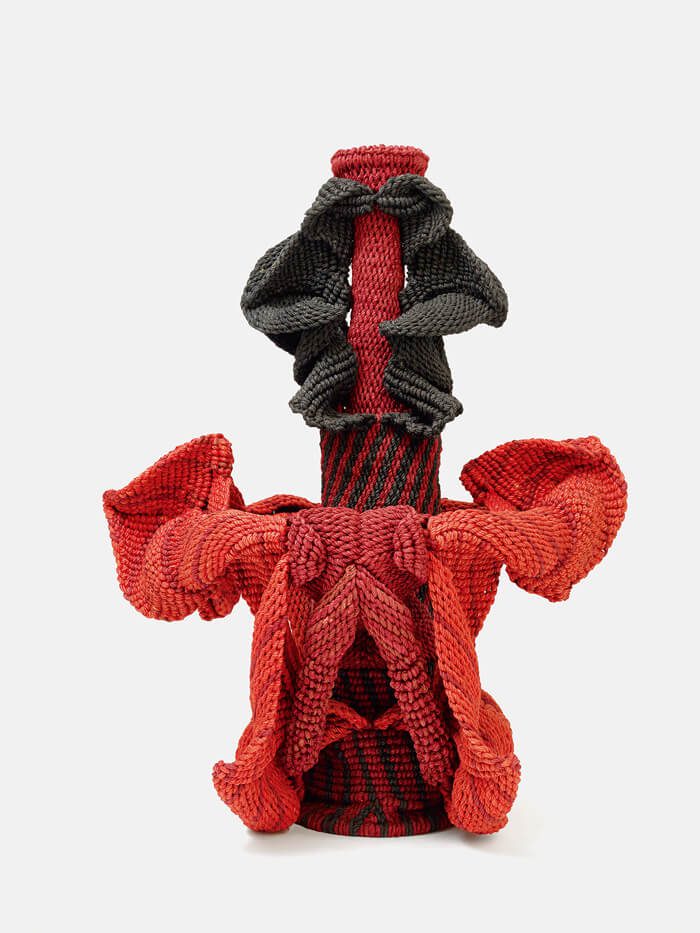
I continued asking questions. What did I learn from these nine curators about the art scene in our fabled high desert? This is an art scene beyond even what I knew. While some people talk about art exhibitions in New York and New Mexico in the same breath—which is certainly not a bad thing—others feel shut out, thrown off the train, in some ways. But everyone agrees on “the significance of art.” What art events would I now like to see as a result of these conversations? I am curious about Labor: Motherhood and Art at NMSU Las Cruces, the Alcoves at the New Mexico Museum of Art, and Diego Romero vs. the End of Art. I’d like to visit Albuquerque Zine Fest 2020, and I’ll be looking for the graffiti on the trains on Commercial Street.




